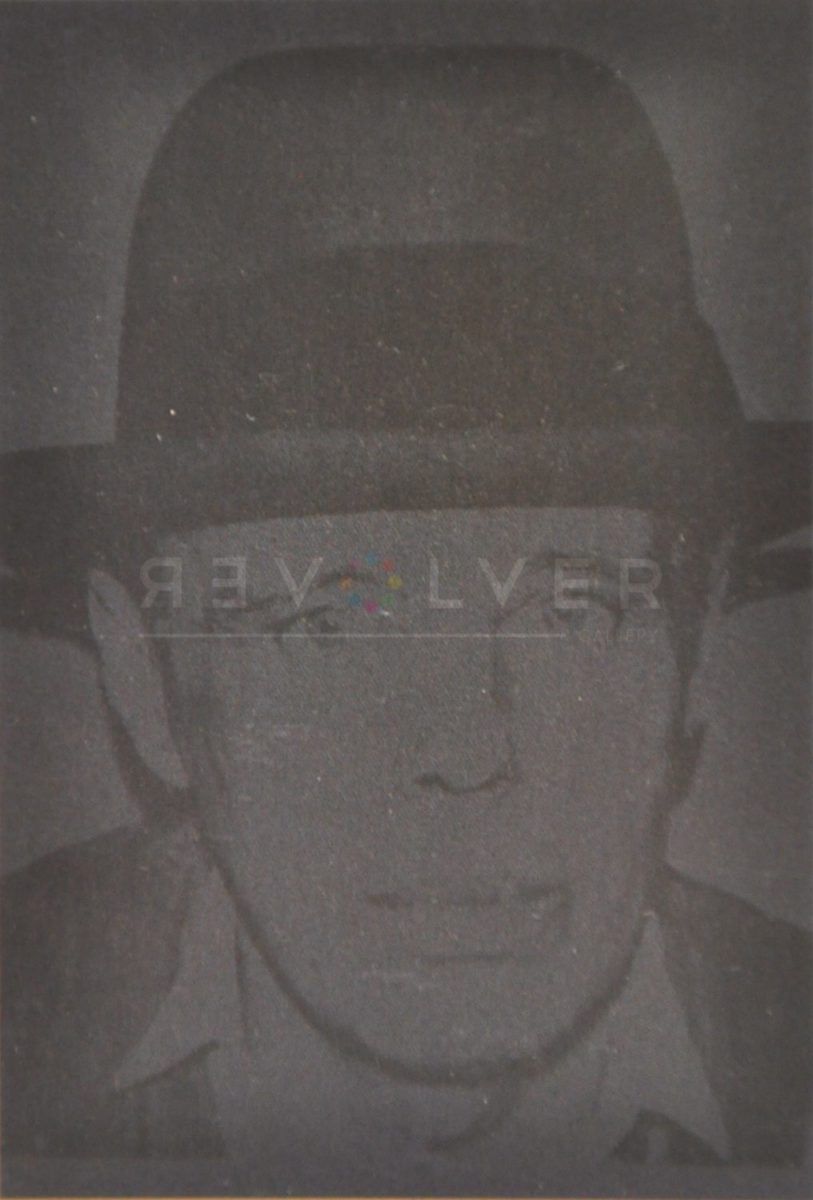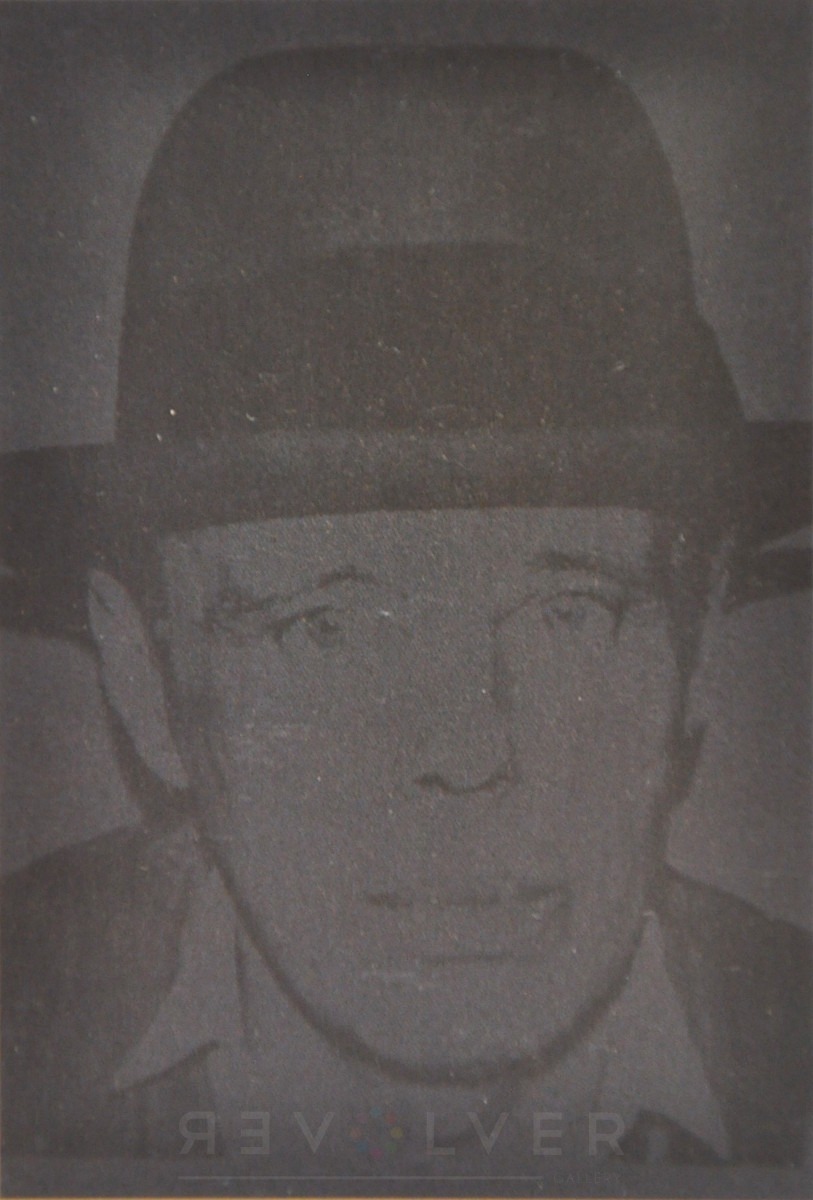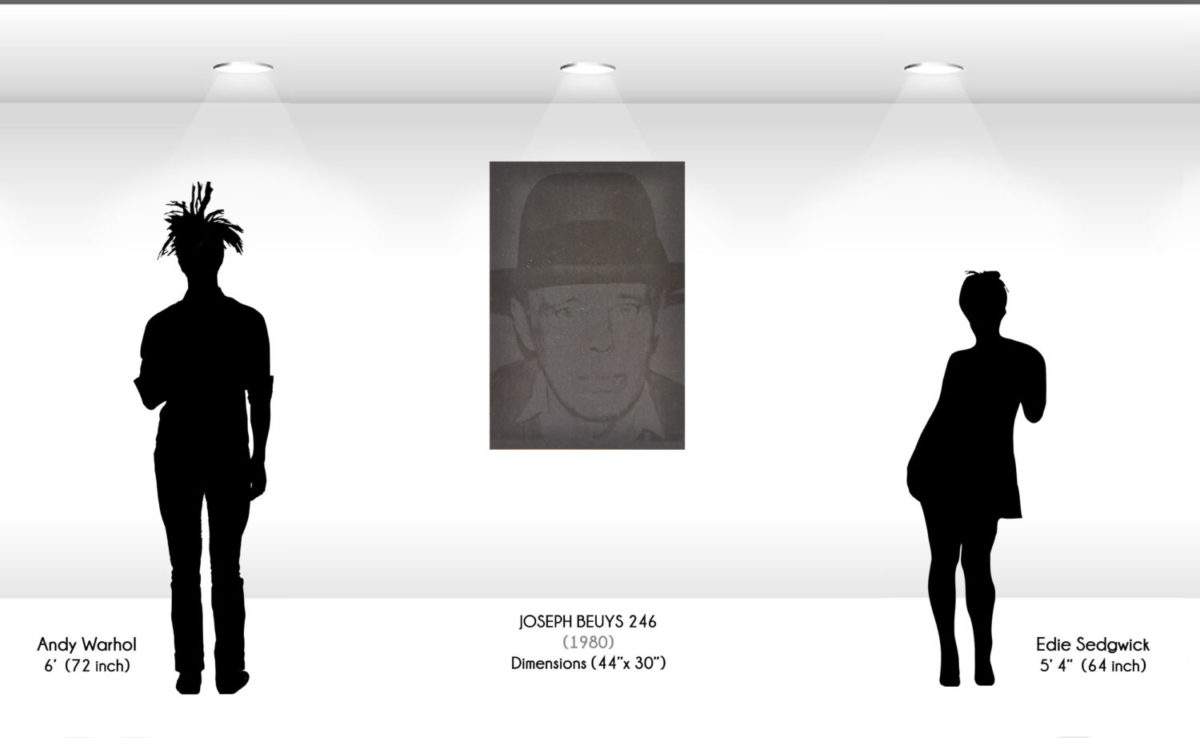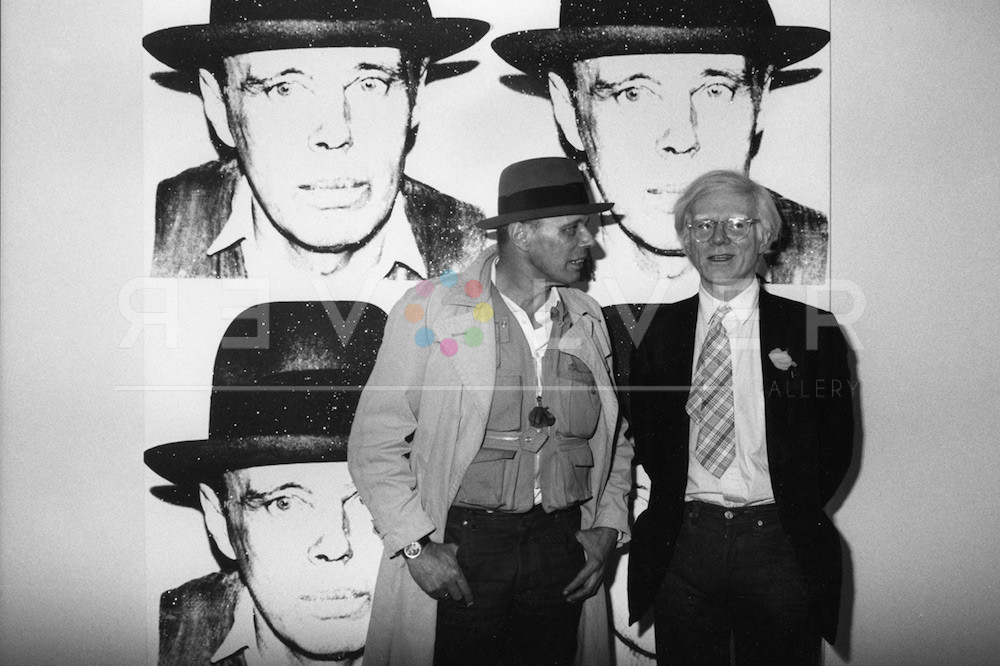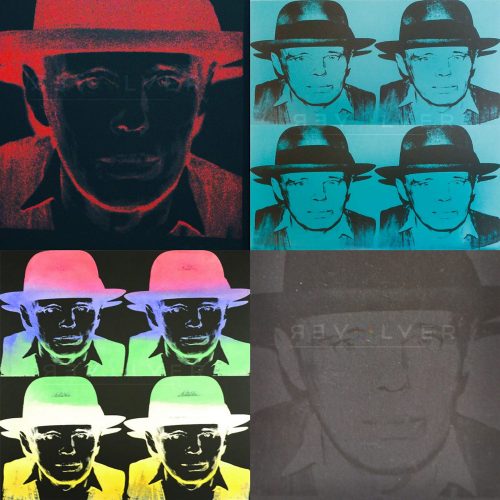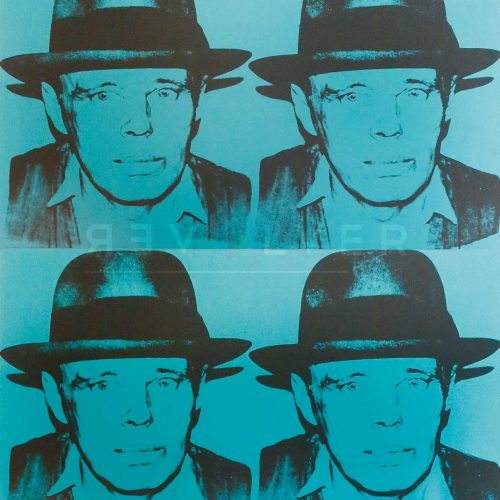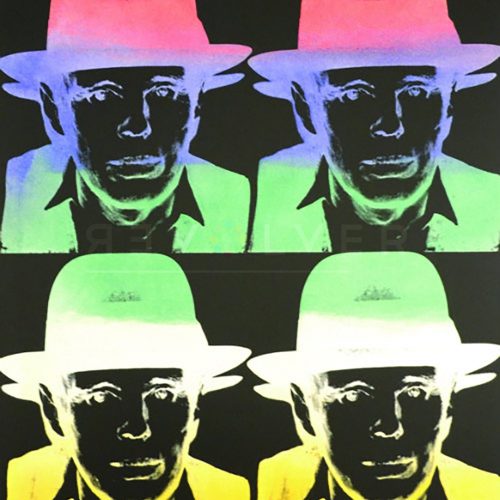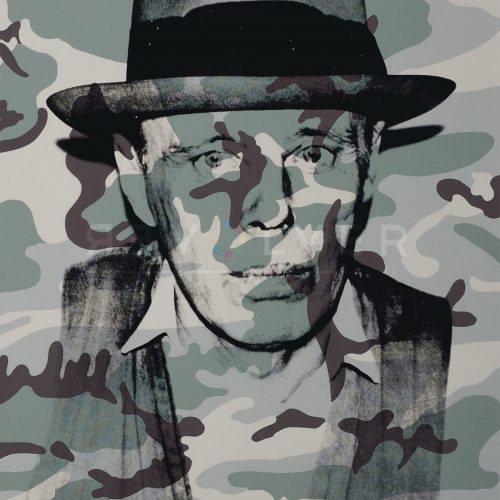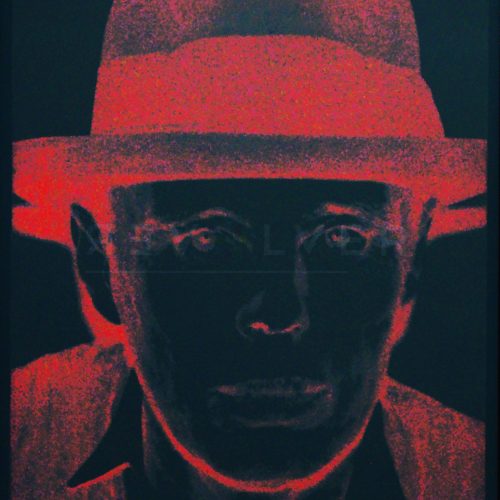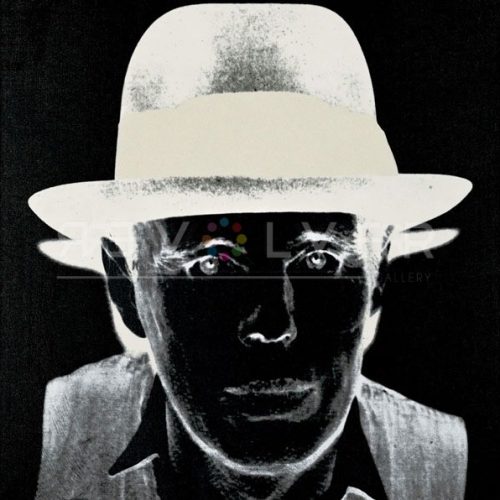Joseph Beuys 246 by Andy Warhol is a screenprint from the artist’s Joseph Beuys complete portfolio, a series of portraits created by Andy Warhol in 1980. In this work, Warhol celebrates the spirit of Joseph Beuys, a highly influential but controversial figure in 20th century art. Warhol did so by capturing Beuys in his typical garb, a felt hat—apparently, he preferred Stetsons purchased in London—and a fisherman’s vest. Though quite removed from the typical consumerist overtones of Warhol’s art, Joseph Beuys was similar in that he crafted an image and persona, essentially branding himself. However, Beuys wasn’t content to just garner fame to further the prestige of his art. He also turned that fame and controversy into political action, either by making great statements on things like ecology, such as with his 7000 Oaks project, or by participating in actually forming a political party, Die Grünen. Warhol even created a flyer for the latter at Beuys’ request, a rare and surprisingly political act for the artist.
Joseph Beuys 246 represents an oddity in an already odd series. Warhol renders Beuys nearly invisible; that is, he screenprints the artists’ portrait onto a dark and shadowed background similar to the pieces that precede and follow this one. But unlike those other pieces, Warhol uses the photo positive instead of its inverted negative, and so Beuys nearly recedes into the background, making it hard to actually view him and pick out the features of his face. He is still made into a ghastly figure, though by other means. Instead of seeming like a specter of bright white, he is made into darkness, lurking in the shadows. His hat still looms large, however, essentially cutting the piece in half with upper and lower registers. Perhaps this is a comment on the still unrecognized power of Beuys’ work. It lay dormant but impactful.
Joseph Beuys 246 is the product of one of the few separate incidences when the artists met. In 1979, Warhol met Beuys at an art gallery in Dusseldorf and snapped the photographs that make up the basis of the series. Considering their preferred modes of artistic expression, the two figures seem an unlikely couple, but they both represented the highly influential yet controversial edge of contemporary art in their respective countries—especially at the time of their meeting.
Video: Joseph Beuys meets Andy Warhol (1979, Hans Mayer gallery in Dusseldorf).
Video: Joseph Beuys – How to Explain Pictures to a Dead Hair (1965, at the Galerie Schmela in Düsseldorf).
Photo of Warhol and Beuys courtesy of Schellmannart.com.

